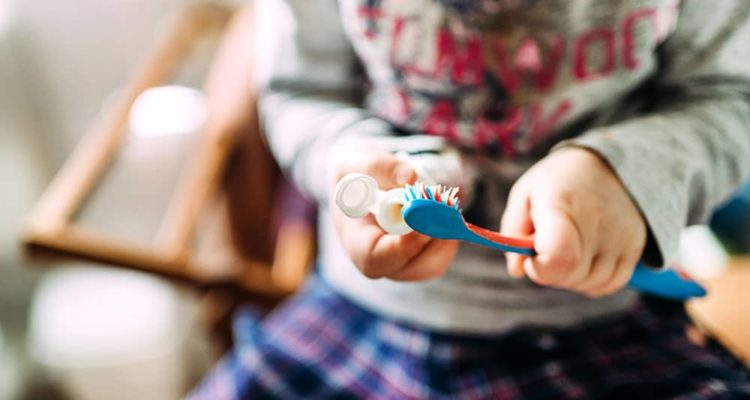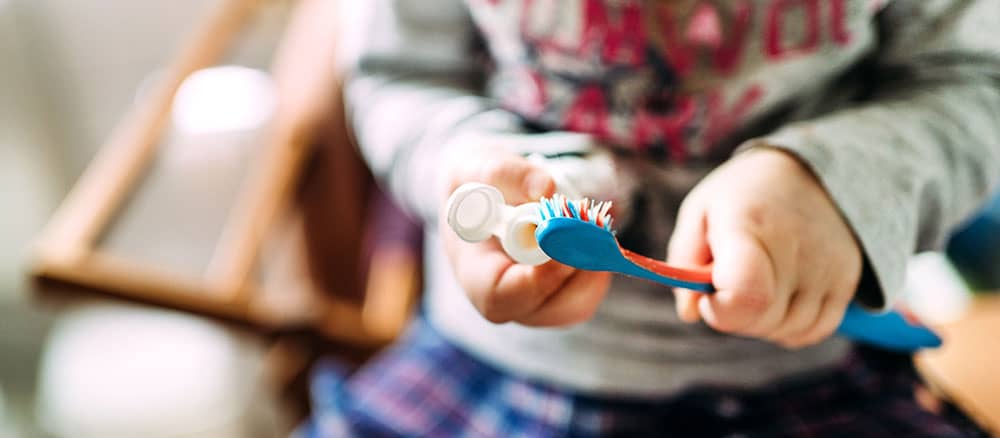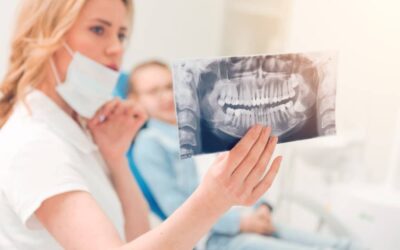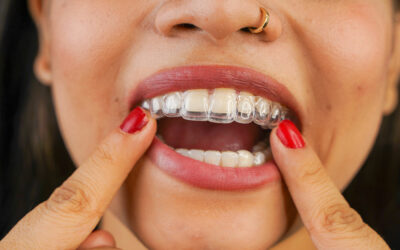Did you know your child will have all 20 of their baby teeth by around 3 years old? It is important to keep your child’s teeth, mouth, and gums healthy to prevent decay and infection. Decayed or damaged baby teeth can lead to crowding issues or damaged adult teeth.
Many kids find it difficult to maintain a consistent, effective oral hygiene routine, but making brushing and flossing fun can help set your kids up for a healthy smile and good hygiene habits for life.
Here, we’ll share our top tips for helping your child start a lifetime of healthy oral hygiene habits.
6 Tips For Making Oral Hygiene Fun For Your Kids
Here are six tips you can try to make oral care more fun for your child:
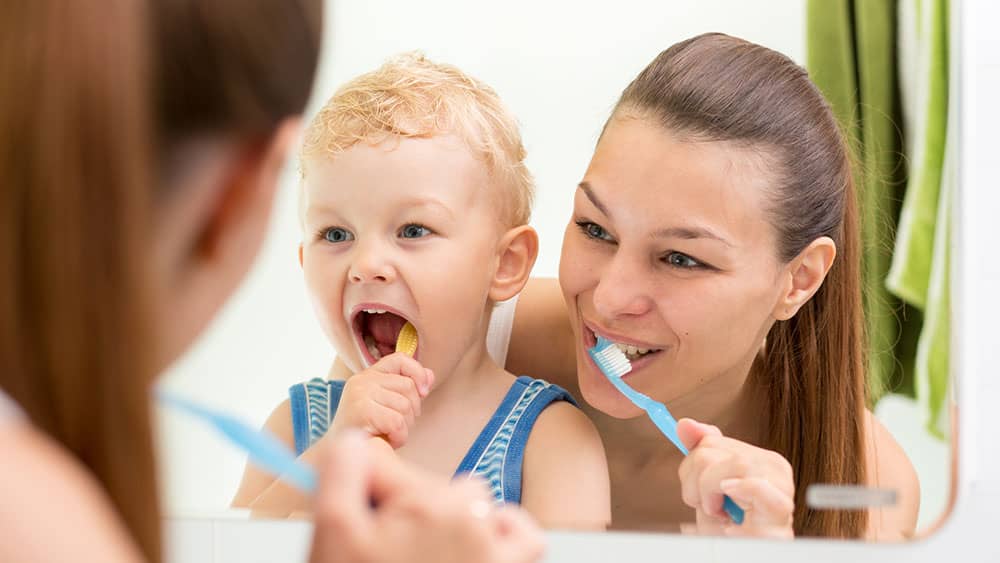
Start Early With A Child’s Dental Hygiene
- Let Them Choose Their Toothbrush
When it is time for a new toothbrush, let your child pick it out. This gives your child a sense of control over their oral hygiene and something to look forward to.
From their favourite movie or cartoon characters to fun shapes, there is a huge variety of fun toothbrushes out there. However, it is important to pay attention to design and function to ensure effectiveness.
Here are important factors to consider regarding toothbrushes:
- Choose a Child-Specific Toothbrush — Look for a toothbrush specifically designed for children ages 2 to 5. With smaller heads and cushioned, non-slip handles, these brushes are designed to fit the smaller size of a child’s mouth and hands.
- Choose Softer Bristles — Over-aggressive brushing or bristles that are too hard can lead to gum damage and tooth sensitivity. A toothbrush with soft bristles can offer an effective clean while helping to prevent damage.
- Match the Brush to the Size of the Mouth — Look for a toothbrush that allows the bristles to reach the backside of the furthest molar. The brush should be capable of cleaning the entire surface of all teeth without missing any spots.
- Let Your Child Choose the Toothpaste
As with choosing a toothbrush, letting your child pick his or her toothpaste gives them a sense of involvement in their oral routine. This sense of control and involvement will help keep them engaged and enthusiastic about caring for their teeth.
Toothpaste is available in a wide assortment of fun flavours and colours. However, as with a toothbrush, it is important to pay attention to function, not just the fun details.
Here are a few guidelines to follow to help assist your child in choosing a fun and effective toothpaste:
- Look for the ADA seal – It is important to find a toothpaste endorsed by the Australian Dental Association. The ADA seal — found on the box of the tube — ensures the toothpaste has been evaluated for safety.
- Choose a Fluoride Toothpaste – Fluoride is a mineral that has been proven to help fight tooth decay. While fluoride is an important ingredient for oral health, swallowing too much fluoride can lead to fluorosis. For children who are too young to properly spit out toothpaste, consider low-fluoride toothpaste.
- Beware of sodium lauryl sulphates (SLS) – Sodium lauryl sulphates, a chemical present in many personal care products, including toothpaste, has been linked to allergies, and sensitivities, and may even cause canker sores to flare up. When possible, opt for toothpaste without this controversial ingredient.
- Brush and Floss Together
Young children often love copying their parents. Take advantage of this desire to mimic you by demonstrating the proper way to brush and floss.
You can also set an example by following a daily oral hygiene routine. You may be surprised how quickly your child will get in the habit of brushing and flossing with you every day. Your child may even start reminding you that it is time to brush and floss! – Sodium lauryl sulphates, a chemical present in many personal care products, including toothpaste, has been linked to allergies, and sensitivities, and may even cause canker sores to flare up. When possible, opt for toothpaste without this controversial ingredient.
- Make Brushing a Game
To make brushing more entertaining, you can use a series of games and creative ideas to keep your child excited about brushing and flossing.
Try these tips to help your child love keeping their mouth healthy:
- Tell a story while your child brushes his or her teeth
- Pretend to brush the teeth of your child’s favourite stuffed animal while they brush their own teeth and follow along
- Sing your child’s favourite song as they brush
- Pretend the toothbrush is a train or plane
- Brush along to music for two minutes
- Use reward charts
- Create your own fun song about brushing your teeth
- Use the Right Amount of Toothpaste
Using too much toothpaste may make it hard for your child to brush properly, while too little may not be effective. Try using about as much toothpaste as the size of a grain of rice for children under 3.
Children aged 3 to 6 should use toothpaste about the size of a pea. Always be sure to supervise your child during brushing as fluoride toothpaste is not meant to be swallowed.
- Teach Your Child How to Brush Properly
You can help teach your child how to brush properly with the following tips:
- Have your child brush in front of the mirror so they can see how they are doing (have a stool for them to stand on if needed)
- Allow your child to hold the toothbrush and brush their own teeth but follow up by finishing to ensure all surfaces have been properly cleaned
- Teach them how to move the brush gently in circular motions
- Demonstrate how to clean along the gumline, the inner and outer surfaces of teeth, and the chewing surfaces
- Teach your child how to gently brush their tongue
- Remind your child to always spit out excess toothpaste rather than swallow it
- Make Adjustments If Needed
If your child is struggling with teeth brushing, try some of the following changes to make the experience more enjoyable:
- Use warm water – The shock of cold water can bother some kids. A slight temperature adjustment may make all the difference.
- Switch up the toothpaste flavour – Have your child try mint, unflavoured, and fruity kinds to see what they enjoy best. Some dentists even offer travel size tubes of toothpaste so you can find out which flavour your child prefers.
- Go electric – Some kids prefer an electric toothbrush to a standard toothbrush. Using an electric toothbrush can feel more exciting and help a child become more enthusiastic about brushing. The consistent motion can also be especially calming for some kids.
Start Early With A Child’s Dental Hygiene
It is important to establish a regular oral hygiene routine as early as possible. As soon as your child gets their first tooth or teeth, they are at risk of experiencing decay.
Once the first tooth comes in, it is important to gently use a small toothbrush or the pads of your fingers to clean around the mouth morning and night. Setting up this routine at an early age will help kids get used to the habit of brushing their teeth day and night.
Additional tips for keeping your child’s teeth, gums, and mouth healthy include:
- Encourage your child to eat a balanced diet filled with a variety of teeth-friendly foods such as fruits and vegetables
- Remind your child to rinse their mouth with water following snacks or meals
- Limit your child’s intake of sugary or acidic beverages
- Limit your child’s intake of sugary, sticky foods (i.e. lollies, taffy, caramels, candy, etc.)
- Teach your child how to care for a toothbrush
- Help your child brush their teeth until they have the manual dexterity to do it properly, usually around age 7 or 8 (continue supervising their brushing habits even when you no longer help them brush)
- Take your child for regular dental checkups
- Remind your child to brush for at least 2 minutes (set a timer if needed)
- Have your child start flossing as soon as they have 2 teeth touching
- Opt for fluoridated tap water
Tips for Your Child’s First Dental Visit
It is important to know when to set up your child’s first dentist appointment to ensure they become comfortable with regular dental visits.
This helps normalise dental check-ups and establish a positive association with dental visits. Avoid threatening kids with a visit to the dentist if they do not brush properly. This may make a child view the dentist as a sort of punishment.
Need More Tips on Helping Your Kids Set Up Healthy Habits?
Instilling a good oral hygiene routine at a young age can help set your child up for a healthy mouth and teeth for the rest of their life.
If you have more questions about how to help your child brush his or her teeth properly or when a child should have their first dental visit, please contact us. We offer a wide range of dental services from general dentistry to children’s dentistry and more and would love to help get your child started on the path to healthy oral hygiene.


